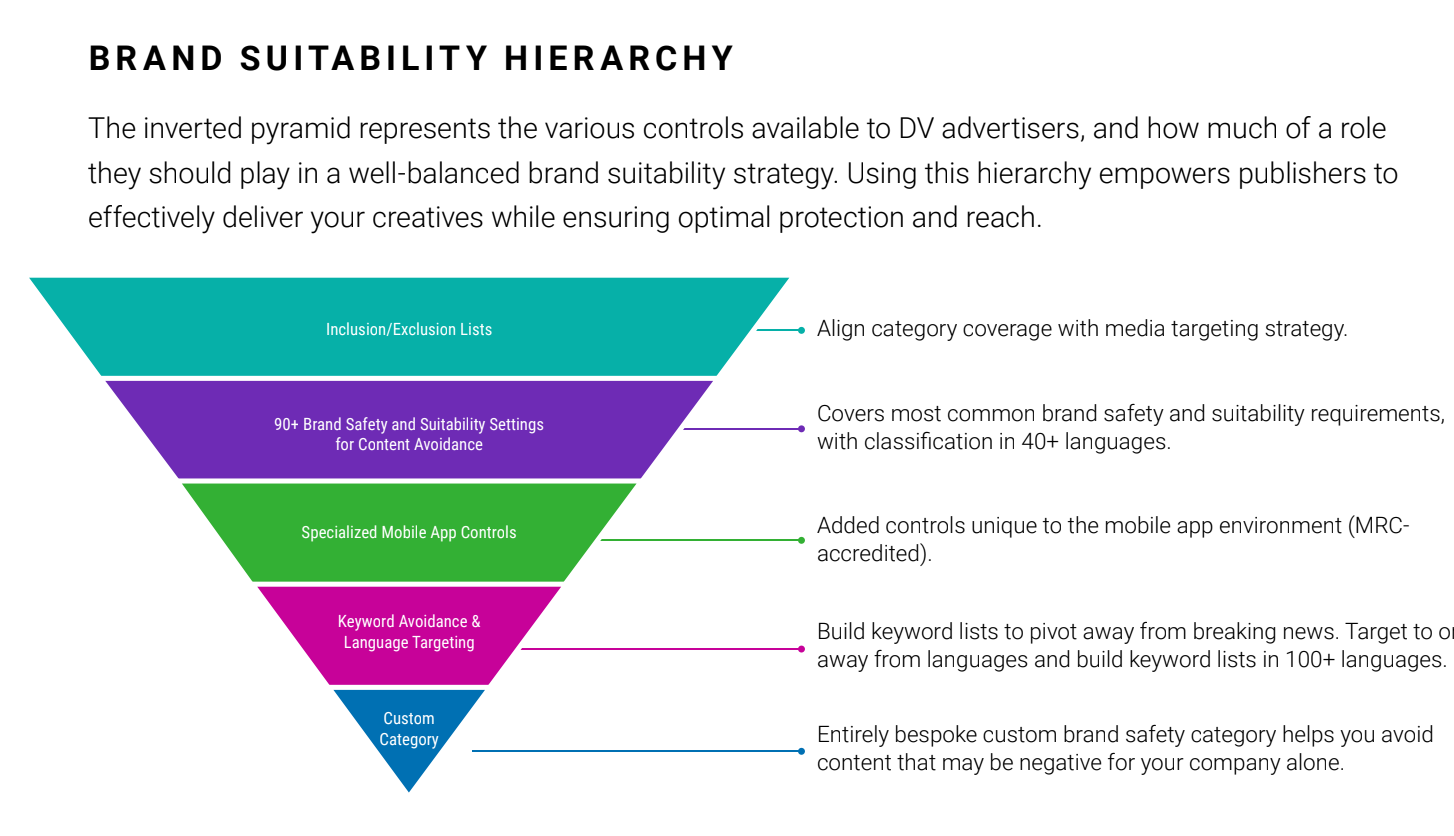As the advertising industry evolves amidst the surge in internet content, brands are showing increased interest in safeguarding their online reputations. They have also become more proactive and nuanced with their brand safety approach by considering suitability and how advertising reflects their brand’s values. To answer this demand, verification companies have been building more advanced toolkits, and continue to improve their quality and effectiveness over time.
With constantly evolving tools and fast-paced news cycles, it can be easy to lose sight of all of the innovation impacting an advertiser’s brand safety and suitability settings. Let’s take a deeper look at both the strategies and tactics that influence how verification technology is used. Over the course of this blog series, we hope to help clear up misconceptions and keep publishers informed. By doing this, publishers can better work with their advertiser clients to communicate and determine best practices. First up on this series of posts, the hot-button topic of keyword blocking.
But first, what is a keyword blocklist?
Keyword blocklists rely on the presence of certain words in the URL of a webpage and from it, determine ads would appear next to content that may be unsuitable for a specific advertiser and should be blocked from running in said contextHistorically, the URL has been an important SEO tool and, as a result, is generally an effective proxy for an article’s title. Keyword blocking only considers what is in the URL string and not what is contained in the article or page underneath. As ad verification technology has matured, other methods of ensuring brand safety and suitability have become more prevalent, such as content avoidance, exclusion lists and mobile app controls.
During the COVID-19 pandemic, DV found that less than 2% of impressions on the top-100 US news sites were blocked solely due to keyword blocking. Nevertheless, an overreliance on keyword blocking can have unintended consequences. For publishers, overly restrictive keyword strategies may limit their ability to accurately deliver campaigns. For advertisers, it could waste opportunities to reach valuable audiences. Depending on how blocklists are set up, it can also increase the amount of blocks that occur on critical publications related to news and diverse publishers, which harms the industry as a whole and often works against a brand’s value-based marketing goals.
Challenges for Keyword Blocklists
Keyword blocklists are highly effective at blocking narrow, brand-specific concerns. They also function well as a last-resort measure to keep up with sudden changes in the news cycle. However, a brand safety strategy can lose vital reach and precision when keyword blocklists are used beyond their intended scope. Some challenges with keyword blocklists include poor maintenance, overgeneralization of terms and unconscious bias.
Poor Keyword Blocklist Maintenance
General sentiment can change very quickly online. That’s why it’s important for brands to maintain a sense of fluidity with their keyword blocklists, and regularly update their keyword blocklists based on current relevance. Not only will this help brands avoid incompatible content as it arises, but it will also allow them to reconsider opportunities that might have been off-limits in the past, but aren’t anymore.
Overgeneralization of Terms
It’s also important to consider keywords often have multiple meanings and some of those meanings may not align with a brand’s safety needs. Words like “shot” can be added to a keyword blocklist due to a desire to avoid gun violence, but “shot” can also relate to basketball, photography and other unrelated topics. Category avoidance tools offer a more sophisticated approach , providing specific context protection in lieu of reliance on generalized terms, a key best practice for advertisers who partner with DV.
Unconscious Bias
Another potential blocklist problem is the inherent bias that might dictate the composition of the keyword blocklist. In an article with The Drum, Justin Taylor, managing director of Teads UK, cited instances where blocklists created keyword redundancies and actively inhibited “a hugely diverse spectrum of content” from marginalized groups.
How to Have the Keyword Conversation
Since keyword blocking is usually advertiser-driven, verification companies and publishers need to be proactive in communicating the importance of adjusting policies that are too rigid or inefficient. Focus the conversation on actionable steps that can be taken to improve performance and delivery efficiency.
Some best practices include:
- Have keyword conversations as early as possible in the campaign kickoff process that publishers regularly conduct with advertisers.
- Encourage advertisers to regularly review their blocklists, and opt against overly broad terms, words or phrases that might have multiple meanings.
- Highlight the benefits of more precise and granular controls. This enables brands to buy content in broader, but more accurate, categories while maintaining their desired brand protection.
- Be a source of information for advertisers who aren’t aware of how blocking works from a technical standpoint, helping them understand some of the pitfalls that may impact campaign performance.
DV has also created a guide to help publishers and advertisers collaborate on these conversations.
A More Comprehensive Brand Safety Strategy
Perhaps the most encouraging part of this story is the growing industry-wide awareness about the problems that ‘overblocking’ can cause, and the work being done to solve them. Here at DV, we believe that publisher and advertiser education around their use of brand safety technology and best practices is an essential step in the right direction for everyone.
DV’s brand suitability guide explains how brands can better work with publishers to address brand safety and suitability. Among the subjects discussed, we also included an inverted pyramid that visualizes an ideal approach to brand suitability for advertisers and publishers. As you can see,t keyword blocklists are placed toward the bottom of the pyramid, showing its reduced presence within a full brand suitability strategy.

Conclusion
Brand protection is an essential part of the digital advertising ecosystem. But in today’s Internet, it’s no longer enough to rely on keyword blocklists alone to navigate a rapidly changing and exceedingly subjective digital landscape. Fortunately, many different solutions are available, including more sophisticated technology, better processes, and improved communication between partners.
When you consider the potential losses on either side of the buy/sell fence, it’s easy to understand why keyword blocklists have become a smaller part of a brand’s suitability toolkit. DV works to add more nuance and specificity to brand safety technology, making it possible to advertise in more places that would otherwise be avoided. Stay tuned for our next post in this series, where we dive into the nuanced tools that make this possible.






